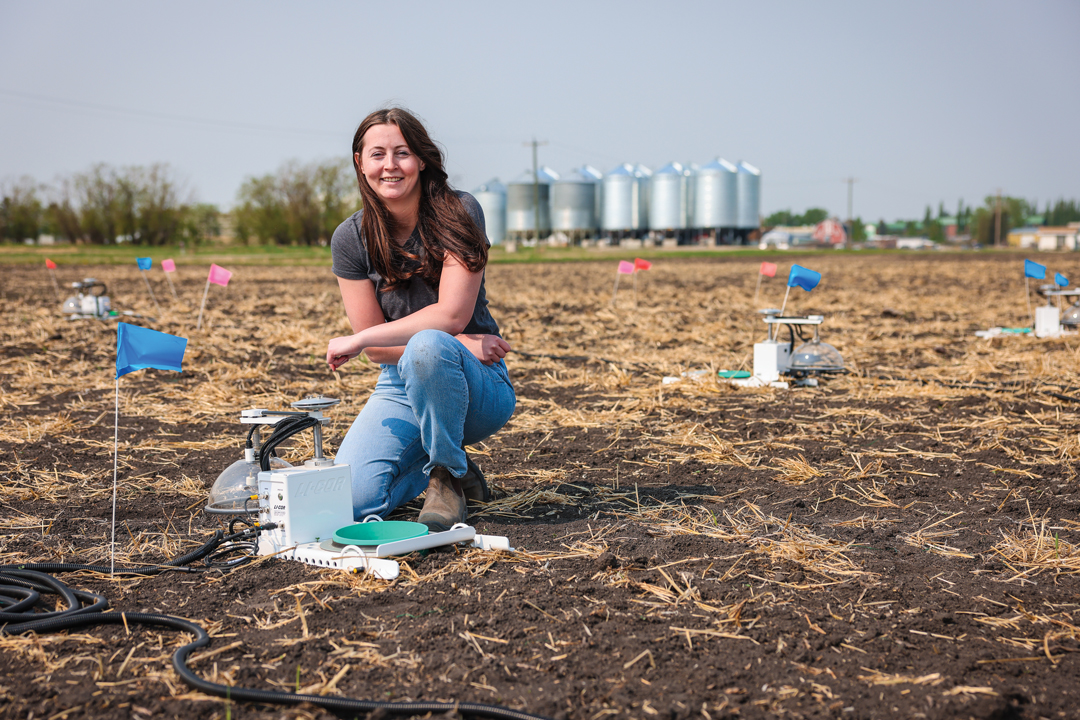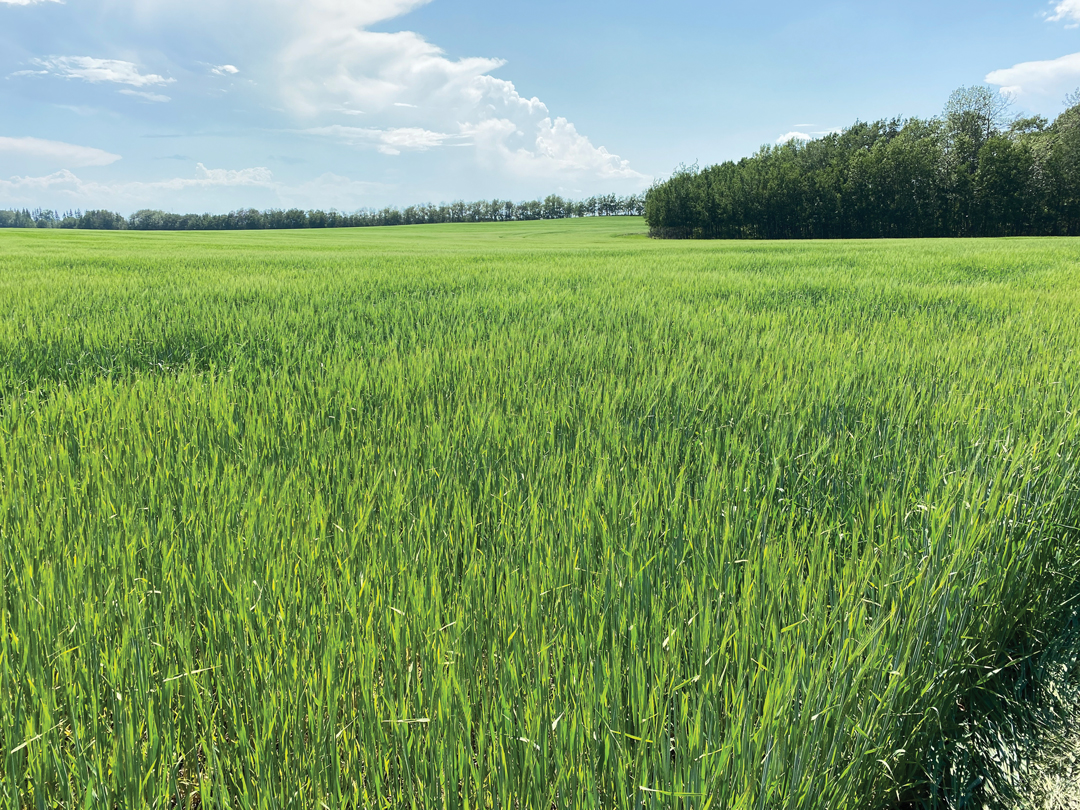ENHANCED EMISSIONS DATA
BY ABBY SIM • PHOTO COURTESY OF OLDS COLLEGE
This past growing season, the Olds College Centre for Innovation (OCCI) research team installed LI-COR chambers on one of the institution’s Smart Farm fields to monitor soil emissions of potent greenhouse gas nitrous oxide (N2O). Advanced technology that produces high volume results quickly, the solar powered system consists of several automated gas chambers connected by tubing to two solar powered trace gas analyzers housed in a small shed.
The system will collect high-quality, high-resolution data on how 4R nutrient stewardship practices impact N2O emissions. The goal is to understand the impact of fertilizer rate on yield and emissions. We will explore how precision agriculture technologies such as variable rate can maximize yield while minimizing emissions.
This data will be analyzed in combination with additional data layers the Smart Farm collects throughout the growing season. With the results, the team will develop methods to predict how changes to field practices impact the carbon footprint of crop production.
The LI-COR chambers were initially installed prior to seeding and fertilizer application to collect baseline data. They were reinstalled after seeding to monitor emissions throughout the growing season and remained in the field until harvest.
We used three different treatments across this small plot trial. These included the prescribed rate of fertilizer based on soil tests, a rate 30 per cent higher than recommended and another 30 per cent lower.
The chambers function on a continuous automated cycle. In succession, they seal themselves for two minutes and the captured gases are moved into the analyzers, which measure N2O, carbon dioxide (CO2) and water vapour.
Environmental conditions such as soil moisture and temperature can affect microbial activity. This in turn affects N2O emissions. For instance, they can be expected to peak after a rainstorm. As well, we noted variation in the data prior to incoming rains. This may be caused by the low-pressure systems that accompany storms. Some fluctuation was also likely due to soil disturbance during seeding and the initial installation of the chambers. The weather associated fluctuations indicate the equipment has worked well, which is a positive indicator for the quality of eventual results. Though the one-year project is complete, and analysis is underway, we plan to conduct a second small-plot trial. We will use the system in additional future 4R nutrient stewardship research projects.
As part of a two-year, co-operative project with Qube Technologies, OCCI additionally installed Qube sensors in the existing trial plots in late July to measure N2O and CO2 emissions. The solar powered devices look like weather stations and collect emissions by means of a downturned cup installed in the soil. Employing these two technologies in the same trial will allow us to compare and validate emissions measurements.
This applied research project illustrates how data and information collection methods have advanced and allow researchers to draw better conclusions faster to provide better guidance to the agriculture industry.
Visit oldscollege.ca/smartfarm for updates on all Olds College research.
Abby Sim is a research technician for smart agriculture applied research at the Olds College Centre for Innovation and project lead for the LI-COR chambers applied research project.







Comments